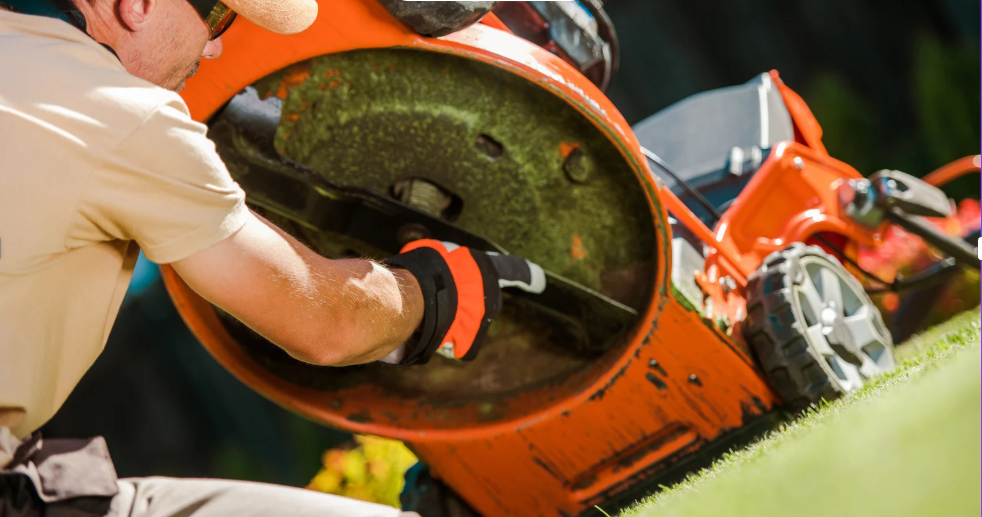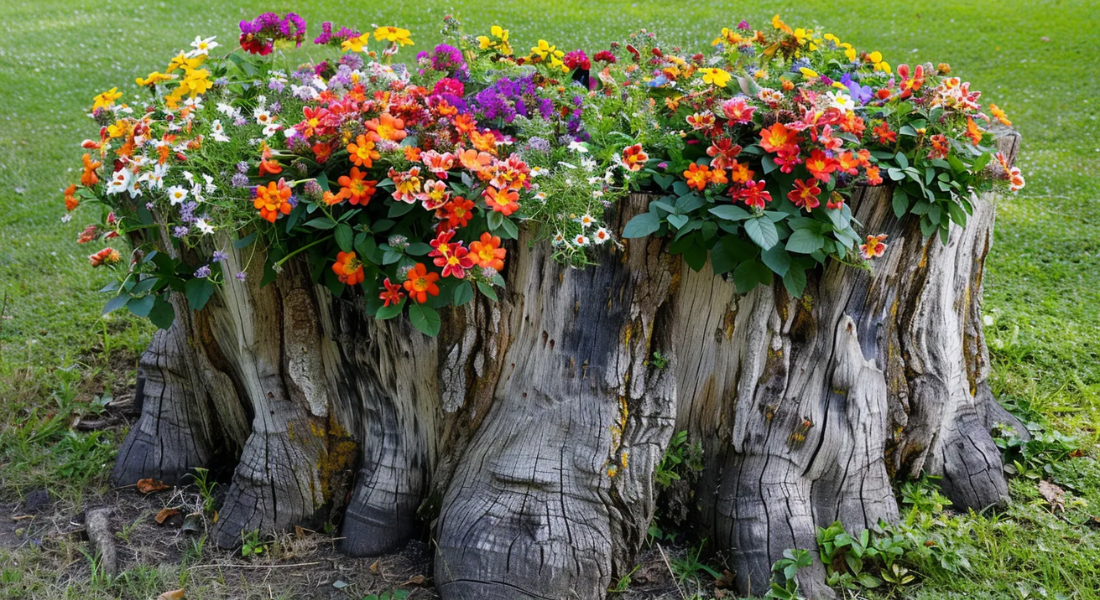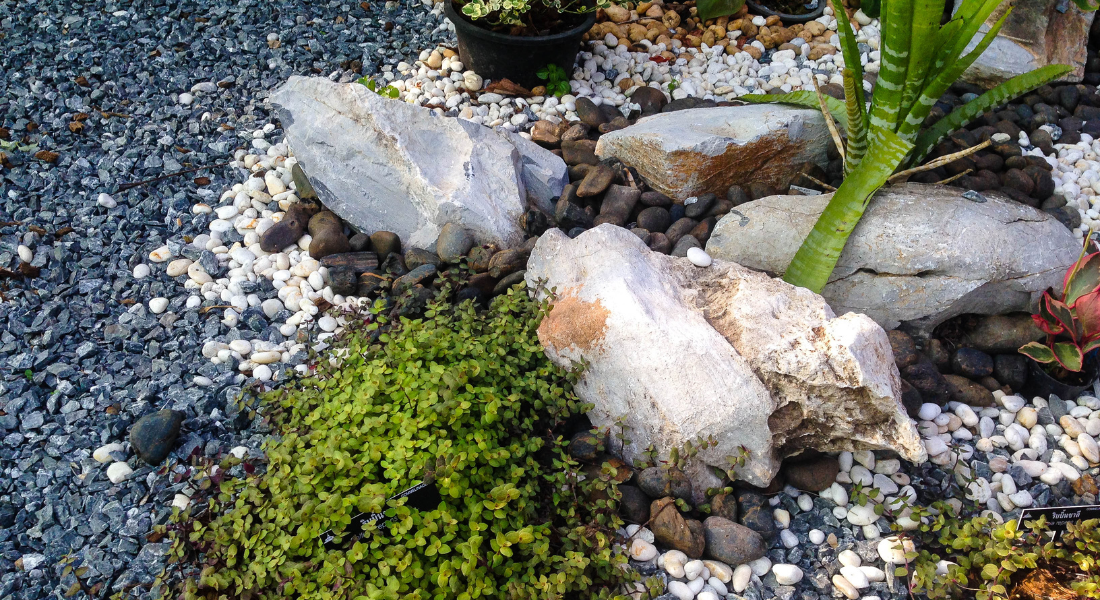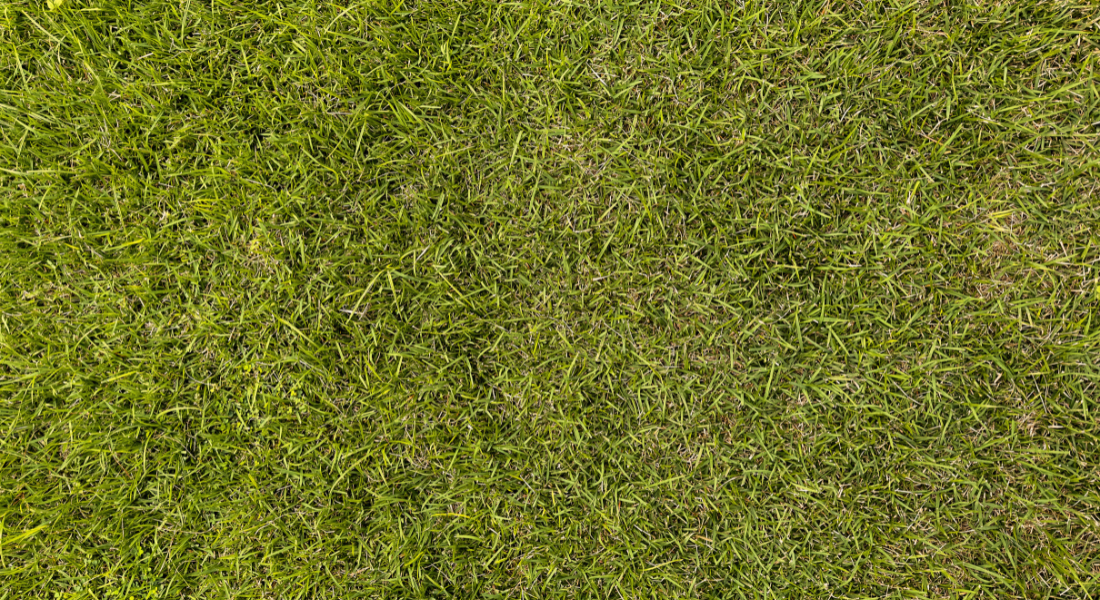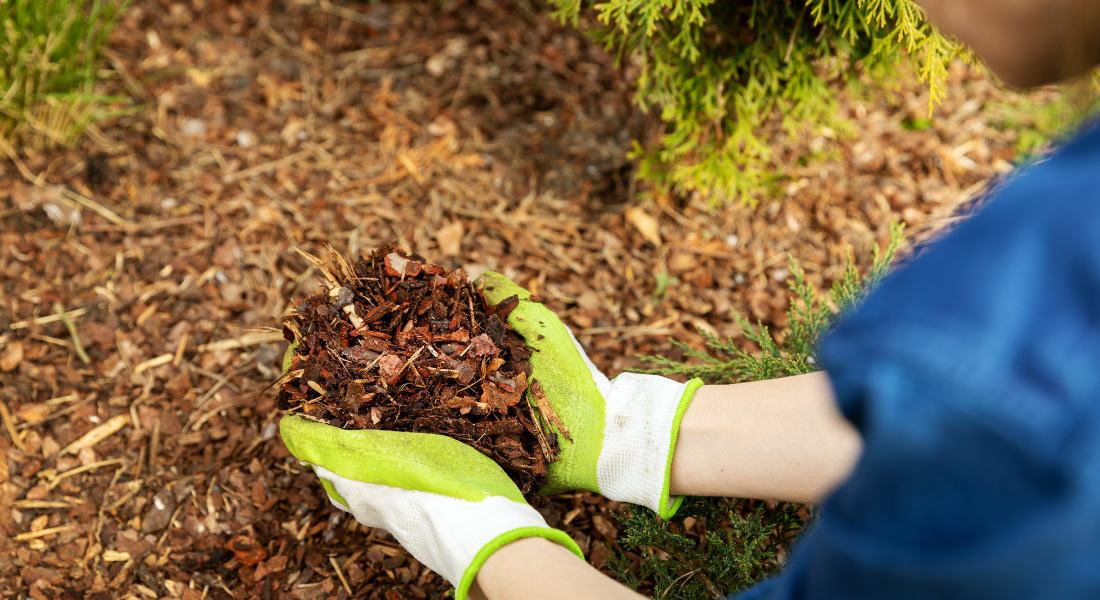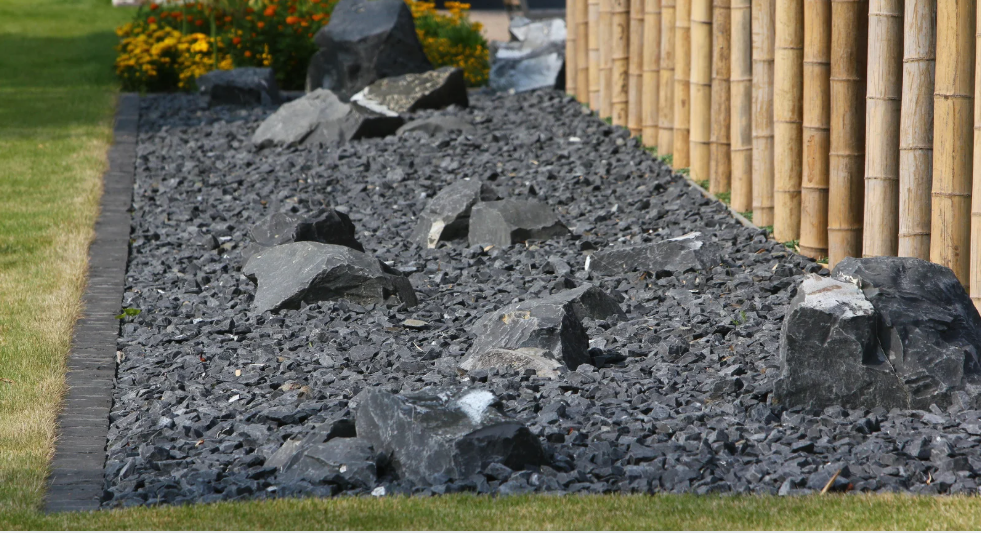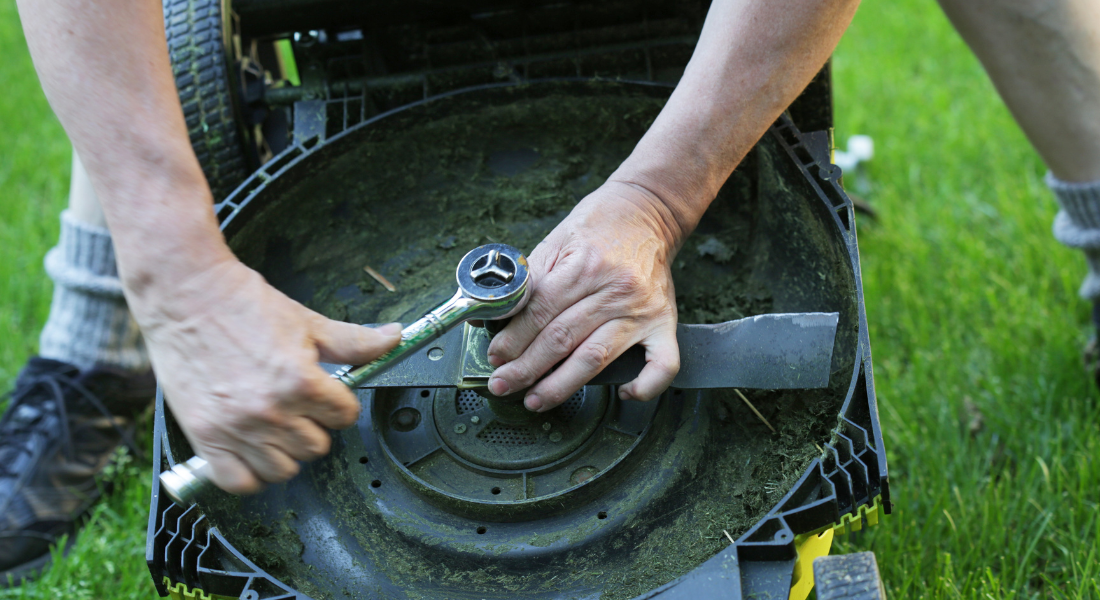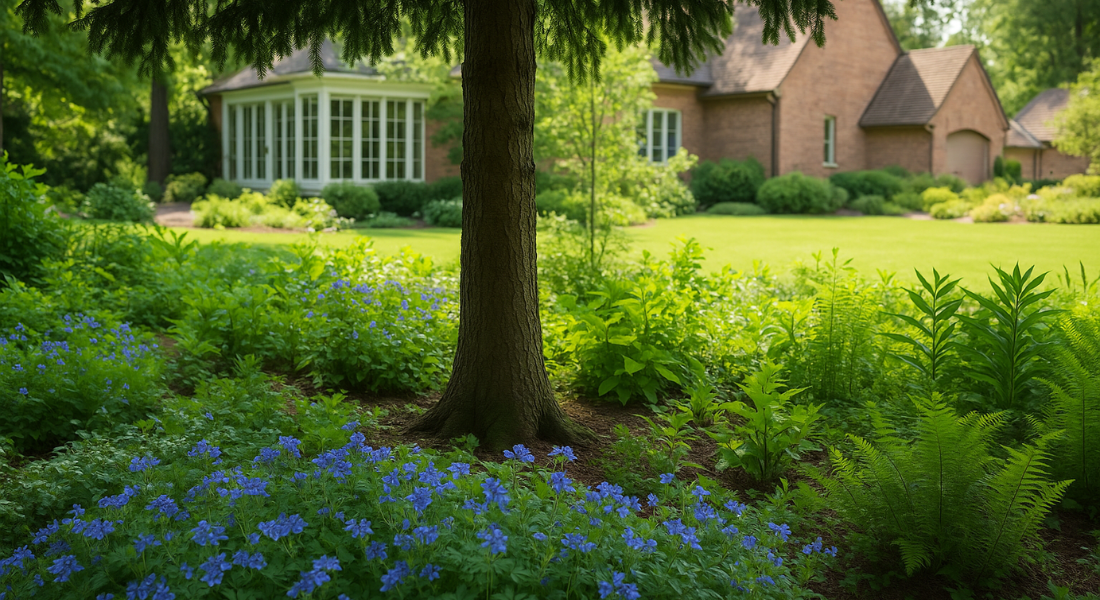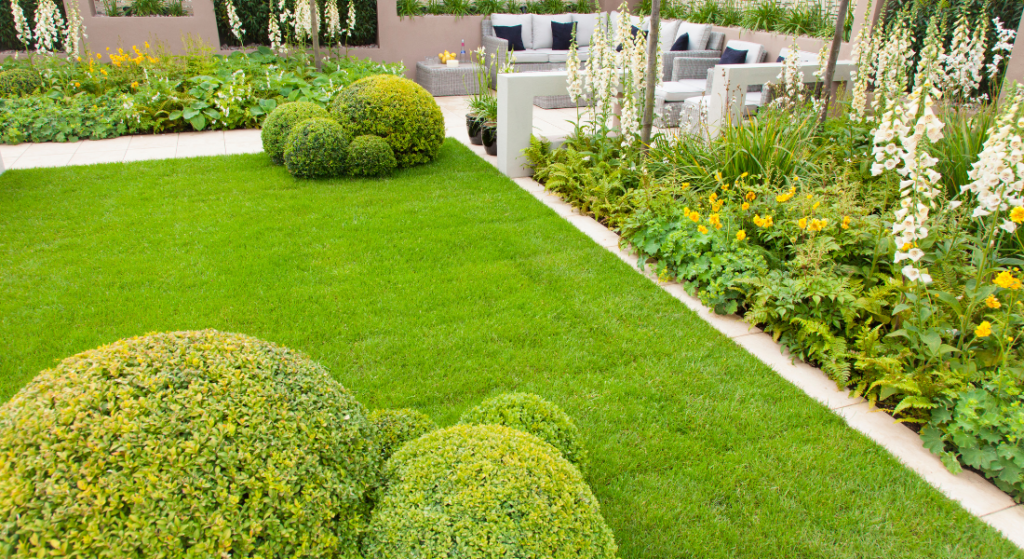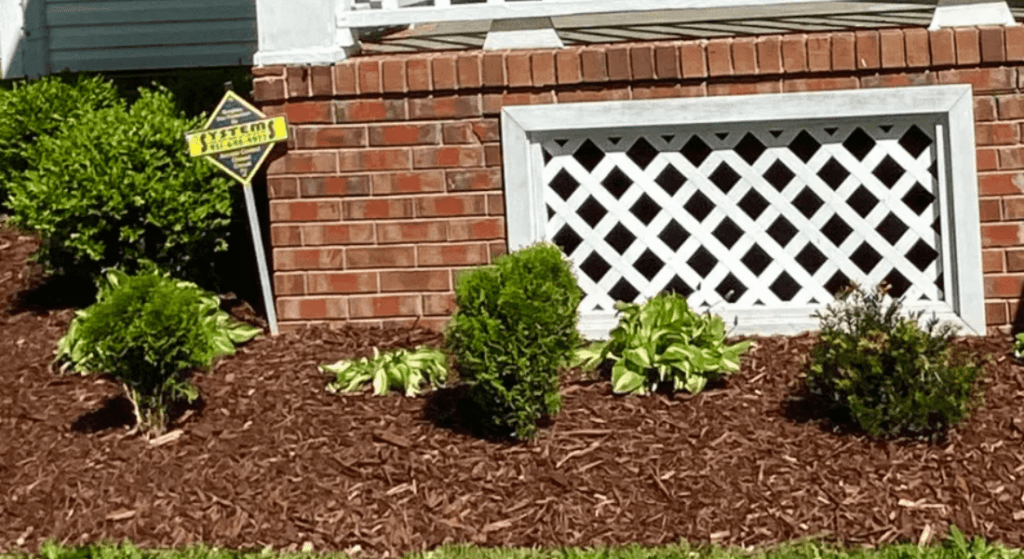Can You Plant Bedding Plants on Top of Trees?
Have you ever looked at a big tree root and thought, “Wouldn’t it be nice to plant some flowers here?”
Many gardeners wonder if they can add plants around trees or even build a raised bed on top of tree roots.
But it’s not that simple. In fact, it can cause a lot of problems for your tree.
In this blog, we'll cover:
- Why planting on top of trees is bad for the trees and the plants.
- What plants can be planted on top of a tree.
- How to keep your plant healthy.
You Can Plant Bedding Plants on Top Of Trees, But... You Need To Be Careful
Let’s talk about how trees and smaller plants interact.
Trees have strong, spreading roots that pull in a lot of water and nutrients.
That means any plant sharing the space will have to compete.
Some plants do well on top of a tree, but some plants will die if you put them on top of a tree.
The tree canopy also makes shade, which limits the amount of sunlight reaching the bedding plants.
This means you need to choose shade-tolerant, shallow-rooted plants that can handle both the lack of direct sunlight and competition for water.
Best Plants for Growing On Top Of Trees
If you want to plant on top of a tree and keep everything healthy, choose plants that can handle shade and root competition.
Here are some great options:
Perennials:
- Hostas
- Ferns
- Astilbe
- Bleeding Heart
- Coral Bells
Ground Covers:
- Vinca Minor (Periwinkle)
- Sweet Woodruff
- Wild Ginger
- Pachysandra
- Creeping Jenny
Flowers:
- Impatiens
- Begonias
- Lily of the Valley
- Foxglove
- Hellebores
Shrubs:
- Rhododendrons
- Azaleas
- Hydrangeas
- Yews
- Boxwoods
These plants will thrive in the shade and won’t disrupt the tree’s root system too much.
Our Recommendation For Plants In Clarksville, TN Weather
If you live in Clarksville, TN, you’ll need flowers that can handle hot summers and occasional cold snaps. Here are some great choices:
- Black-Eyed Susan – Tough, drought-resistant, and loves partial shade.
- Daylilies – They thrive in a variety of conditions and bloom beautifully.
- Coreopsis – Bright yellow flowers that can handle heat and humidity.
- Lantana – Loves the sun but can tolerate partial shade.
- Columbine – Prefers shaded areas and is great for early spring color.
We also have a blog about the best tree to plant in Clarksville, TN, weather. Read our blog here.
How to Safely Plant Bedding Plants Over Tree Roots
Assess the Tree’s Health
Before planting, check if the tree is healthy. Avoid planting under a tree with disease or weak roots.
Protect the Root Flare
The base of the tree (where the trunk meets the roots) should always stay visible. Never cover it with soil or mulch.
Pick the Right Bedding Plants
Choose shallow-rooted, shade-tolerant bedding plants that won’t compete too much with the tree.
Prepare the Soil Carefully
Instead of adding lots of soil, use a thin layer of compost. This keeps roots nourished without suffocating the tree.
Plant Without Damaging Roots
Dig small holes between the tree roots rather than cutting into them. Work gently to avoid harming the tree.
Give Plants Room to Grow
Don’t overcrowd bedding plants. Leave space for air circulation and root growth.
Water Properly
Since trees and plants compete for water, soak the soil deeply but avoid overwatering. Check moisture levels regularly.
Use Mulch Wisely
A thin layer of organic mulch (like bark chips) helps keep moisture in and prevents weeds. Keep it a few inches away from the tree trunk.
Safety Checklist for Planting Over Tree Roots
✅ Don’t pile soil over roots – Too much soil can suffocate the tree.
✅ Use compost instead of thick soil layers – This feeds the plants and trees without smothering roots.
✅ Ensure airflow – Leave space around the tree trunk to prevent rot.
✅ Choose the right plants – Use shallow-rooted bedding plants that thrive in shade.
✅ Monitor water levels – Make sure both the tree and the plants get enough moisture.
✅ Skip heavy fertilizers – Too much fertilizer can harm both the tree and your plants.
How to Maintain a Healthy Garden Over Tree Roots
Planting is just the beginning! Keeping your bedding plants healthy under a tree takes a little care.
✔ Mulch lightly – A thin layer of mulch helps retain moisture and block weeds. But don’t let it touch the tree trunk!
✔ Water deeply, but not too often – Trees and bedding plants have different water needs. Check the soil and adjust watering accordingly.
✔ Fertilize sparingly – A little organic compost is enough. Too much fertilizer can stress the tree and bedding plants.
✔ Watch for signs of stress – If plants look weak or struggle to grow, they may need more water or a better spot.
By following these steps, you can create a thriving, beautiful bed of plants over tree roots—without harming the tree!
Need Help With Planting In Clarksville, TN? Call GreenLife Services!
If you want to add a flower bed under a tree, call us for expert guidance. Our team will help you choose the best plant for your yard and make sure everything looks beautiful and healthy.
Don't risk damaging your trees—let the experts handle it! Call us today for a 100% free quote!
Key Takeaways
- You can plant under trees, but you have to do it the right way.
- Keep soil levels low to avoid suffocating tree roots.
- Choose shade-loving plants that don’t need much water.
- Use mulch, but don’t pile it against the trunk.
- Water deeply but not too often.
- Keep an eye on your plants and adjust as needed.
If you follow these tips, you’ll have a thriving, beautiful garden under your trees without harming them.
Interested in reading more? Well, do you know how professionals install mulch? How thick much should be? What do pros do before mulching? We have a blog covering this full topic. Read our blog:
How to Install Mulch for a Beautiful, Weed-Free Landscape
FAQs
Q. What Plant Grows on Top of Trees?
A. Epiphytes like orchids, bromeliads, and ferns naturally grow on tree branches. However, if you're planting bedding plants over tree roots, opt for shallow-rooted, shade-tolerant varieties like impatiens, begonias, and ferns.
Q. Is It Okay to Put a Flower Bed Around a Tree?
A. Yes, but it must be done carefully. Avoid adding too much soil over the roots, as this can suffocate the tree. Use a thin layer of compost, choose shallow-rooted plants, and keep mulch a few inches away from the trunk to prevent rot.
Q. How Close Can You Plant Shrubs to Trees?
A. Shrubs should be planted at least 3 to 5 feet away from the tree trunk to avoid competition for water and nutrients. If the shrub has an aggressive root system, give it even more space to prevent root interference.
Q. What is the Most Common Mistake Made in Tree Planting?
A. The biggest mistake is burying the root flare—the point where the trunk meets the roots. Covering it with soil or mulch can suffocate the tree, leading to rot and disease. Always keep the root flare exposed and avoid piling up soil around the base.

